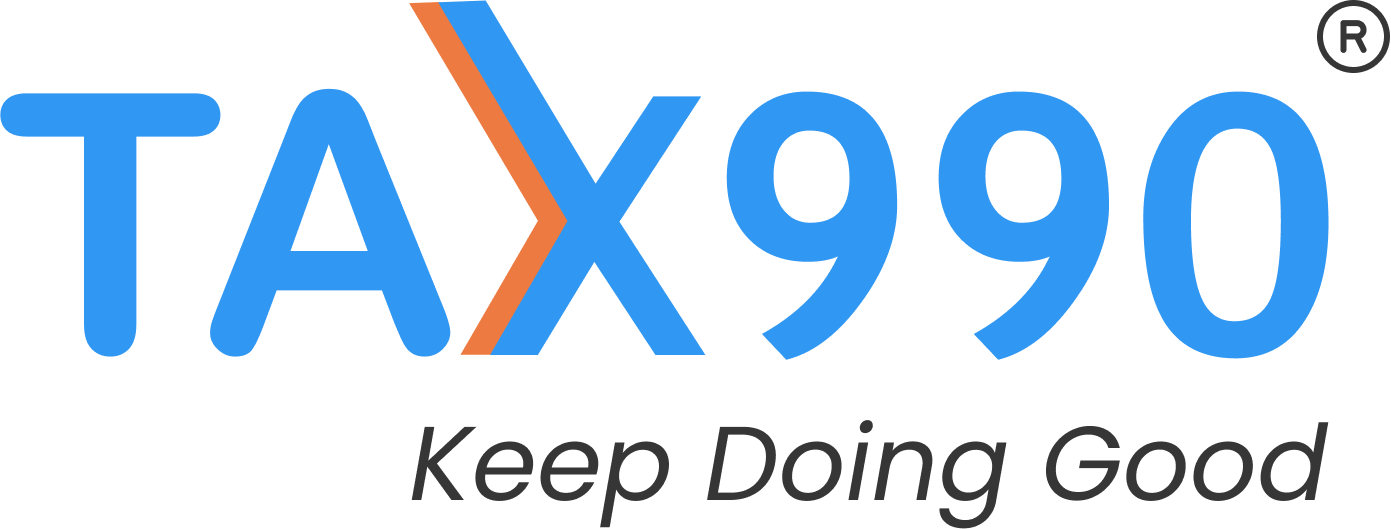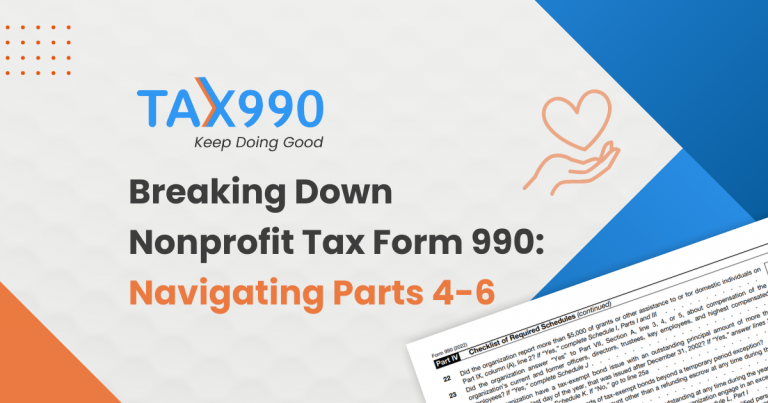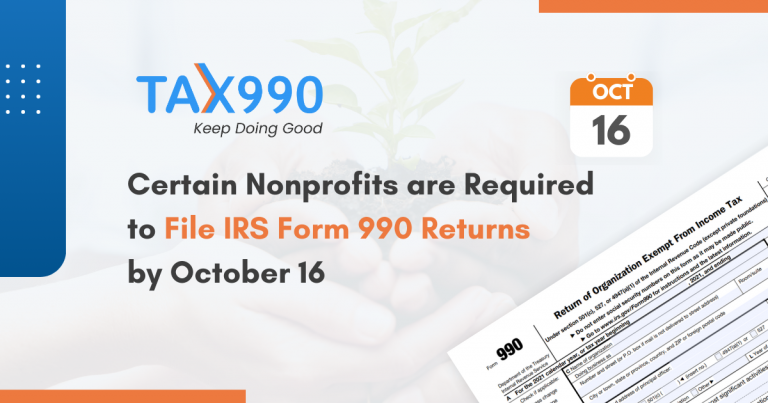Estimated reading time: 15 minute(s)

The IRS Form 990 can be a complex and intimidating tax return. Whether you have recently taken on this responsibility of filing for an organization that you volunteer with or work for, or if you’re a seasoned filing expert, it is crucial to file accurately.
Failing to do so can have major consequences for the nonprofit sector – the worst being the automatic revocation of tax-exempt status after three consecutive years of failing to file accurate tax returns.
Here at Tax990, of course, our goal is to help nonprofit organizations of all sizes maintain their IRS compliance and tax-exempt status without breaking the bank or struggling to keep up with their filing.
In addition to offering an easy and affordable 990 e-filing option, we are also bringing you the next blog in our series, Breaking Down IRS Form 990. Today we’ll be focusing on Parts 7, 8, and 9, but if you have any questions about Parts 1, 2, and 3, check out this blog. Similarly, if you have any questions about Parts 4, 5, and 6, check out this blog!
As always, if you have more specific questions, we recommend that you reference the IRS instructions for Form 990 here, or reach out to a tax preparer for assistance!
Now that you’re up to speed, let’s dive into today’s topic!
Form 990, Part VII:
Compensation of Officers, Directors, Trustees, Key Employees, Highest Compensated Employees, and Independent Contractors
Completing Part VII of the IRS Form 990 is a crucial step as it sheds light on your organization’s governance structure for the IRS. In this section, you will provide information about current officers, directors, and trustees. Include details such as their average hours contributed per week, specific roles within the organization, and compensation.
If an individual received no compensation, simply enter ‘-0’ in columns (D), (E), and (F). Ensure that you fill out all fields in this section. If a field is not applicable to a member, report a ‘-0’ value or choose the most appropriate option.
In addition to current officers, directors, and trustees, you must also report information on former officers, key employees, highest compensated employees who received more than $100,000 in compensation from the organization, and former directors or trustees who received more than $10,000 in compensation during their tenure.
Once you’ve completed the chart in Part VII outlining governance and compensation, you can proceed to answer additional questions related to this section. On-Line 2, indicate the number of individuals who received more than $100,000 in compensation. If none, enter ‘-0’. Lines 3-5 determine whether Schedule J is required. If you answer ‘Yes’ to any of these questions, you’ll need to complete Schedule J to provide additional information.
Section B: Reporting Contracts of $100,000 or More
Part VII, Section B, reports any contract work of $100,000 or more that the organization paid for during the year. Contract work may involve professional fundraisers, law firms, accounting firms, publishing companies, management companies, and investment management firms.
Part VIII: Statement of Revenue
Part VIII breaks down revenue into different categories. All organizations must complete columns (A)-(D), reporting gross receipts for all sources of revenue. Columns (B) through (D) must sum up to the amount in column (A) for each line in Part VIII.
- Column (A): Report gross receipts for all sources of revenue.
- Column (B): Report revenue from activities related to the organization’s exempt purposes.
- Column (C): Report unrelated business revenue received from an unrelated trade or business, unless it is reportable in Column (D).
- Column (D): Report revenue excludable from unrelated business income by sections 512, 513, or 514.
For Contributions, Gifts, Grants, and other Similar Amounts, report voluntary cash and noncash amounts received from various sources.
For Program Service Revenue, enter the organization’s five largest sources of program service revenue, along with corresponding business activity codes.
In the ‘Other Revenue’ section (lines 3-10), list gross revenue for each relevant line item or leave them blank if not applicable.
If reporting Miscellaneous revenue on line 11, provide a description, NAICS business code, and revenue values in columns A-D.
Line 12 calculates the total revenue, and the sums in columns (B), (C), and (D), plus line 1h, should equal line 12, column (A).
Part IX: Statement of Functional Expenses
After reporting gross revenue in Part VIII, you’ll detail expenses in Part IX. For each category in lines 1-24, report total expenses, program service expenses, management and general expenses, and fundraising expenses as applicable. Leave lines or columns blank if not applicable.
Line 25 calculates total expenses per column. Line 26 is for organizations reporting joint costs from combined educational campaigns and fundraising solicitations.
- Column (A): Total expenses for each category.
- Column (B): Program service expenses.
- Column (C): Management and general expenses.
- Column (D): Fundraising expenses.
There you have it, a closer look at Parts 7, 8, and 9 of IRS Form 990! As always, Tax 990 is here to help you simplify the process of filing. As you complete these sections, our system will generate the appropriate Schedule, for example, Schedule J.
Arming yourself with instructions will help but so will our built-in Audit feature! It checks your return using the IRS Business Rules to help you promote the accuracy of your 990 and avoid common mistakes.
Ready to start filing your organization’s 990 with confidence? Create your free Tax990 account today!




